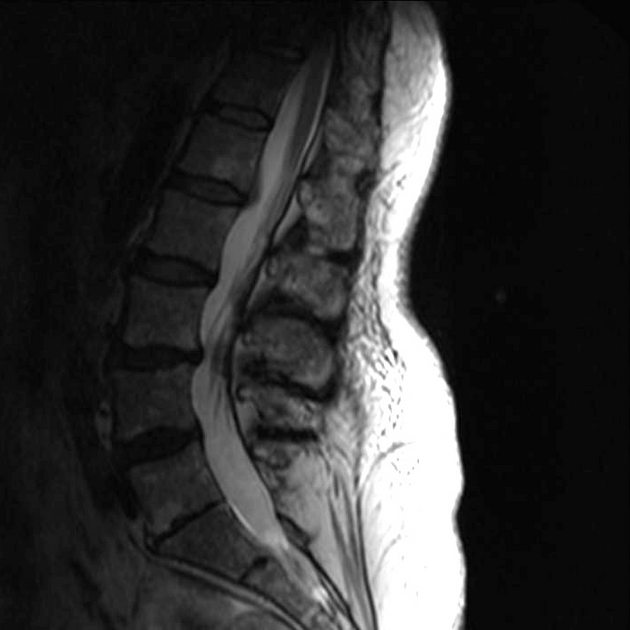Degenerated discs are a very common entity in the spine. They are encountered with increasing frequency throughout life and become almost universal in late adulthood to a varying degree. Due to associated morbidity, they contribute to billions of dollars in healthcare costs and lost productivity every year.
On this page:
Terminology
Degenerative disc disease is regarded as a non-standard term (per Lumbar Disc Nomenclature 2.0) as an imaging description, implying causality between degenerative change and symptoms. Either "degenerated disc" or "disc degeneration" is preferred 4.
Epidemiology
Wide variations exist in the reported prevalence of degenerative changes in the spine, likely related to differences in populations studied and variable definitions of what constitutes degenerative change. Additionally, because degenerative disc disease encompasses a wide variety of individually defined entities, it is hard to make broad statements about its incidence and related symptomatology.
Vertebral osteophytes, disc height loss, disc signal intensity loss, and disc bulging increase in frequency with age nearly linearly but to different degrees, with disc signal loss and vertebral osteophytes increasing the most with age.
Lumbar spine
Below is a list of conditions that are frequently considered degenerative in nature, and their reported incidence is given in both asymptomatic and symptomatic adult populations 1:
-
asymptomatic: ~45% (range 10-81%)
symptomatic: ~35 % (range 22-48%)
-
asymptomatic: ~35% (range 3-63%)
symptomatic: ~40% (range 0-79%)
-
asymptomatic: ~12% (range 0-24%)
symptomatic: ~30% (range 1-55%)
-
asymptomatic: 0%
-
reduction in signal intensity of the disc
asymptomatic: ~50% (range 20-83%)
symptomatic:~50% (range 9-86%)
-
disc height loss
asymptomatic: ~30% (range 3-56%)
symptomatic:~35% (range 15-53%)
-
annular tears (high-intensity zones)
asymptomatic: 30% (range 6-56%)
symptomatic: 15%
-
asymptomatic: ~15% (range 8-19%)
symptomatic: ~45% (range 6-79%)
Pathology
Degenerative disc disease is related to a combination of biomechanical stresses and genetic predisposition which alter the metabolic and structural integrity of the intervertebral disc. These changes, in turn, modify the ability of the intervertebral disc to sustain and transmit forces, and subsequently, compensate for these alterations (or not) in a variety of ways.
Generally, degenerative changes of the disc affect hydration and elasticity of the cartilaginous endplate, annulus fibrosus and nucleus pulposus, with changes most pronounced in the nucleus pulposus. Within the nucleus pulposus, a loss of water-holding proteoglycans occurs, and within the annulus fibrosus type II collagen increases which reduce disc hydration as well. This makes the disc friable, precipitating fissures and progressive structural degradation. Nitrogen gas may be observed filling these defects as it is pulled from surrounding extracellular fluid, creating the vacuum cleft phenomenon.
Classification
See: MRI classification system for lumbar disc degeneration.







 Unable to process the form. Check for errors and try again.
Unable to process the form. Check for errors and try again.